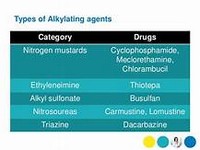Carmustine
CLINICAL USE
Alkylating agent:
DOSE IN NORMAL RENAL FUNCTION
150–200 mg/m2 as a single dose or 75–100 mg/m2 on 2 consecutive days every 6 weeks Implants: 7.7mg, maximum 8 implants
PHARMACOKINETICS
DOSE IN RENAL IMPAIRMENT
GFR (mL/MIN)
DOSE IN PATIENTS UNDERGOING RENAL REPLACEMENT THERAPIES
IMPORTANT DRUG INTERACTIONS
Potentially hazardous interactions with other drugsNone known
ADMINISTRATION
Reconstition
Route
IV
